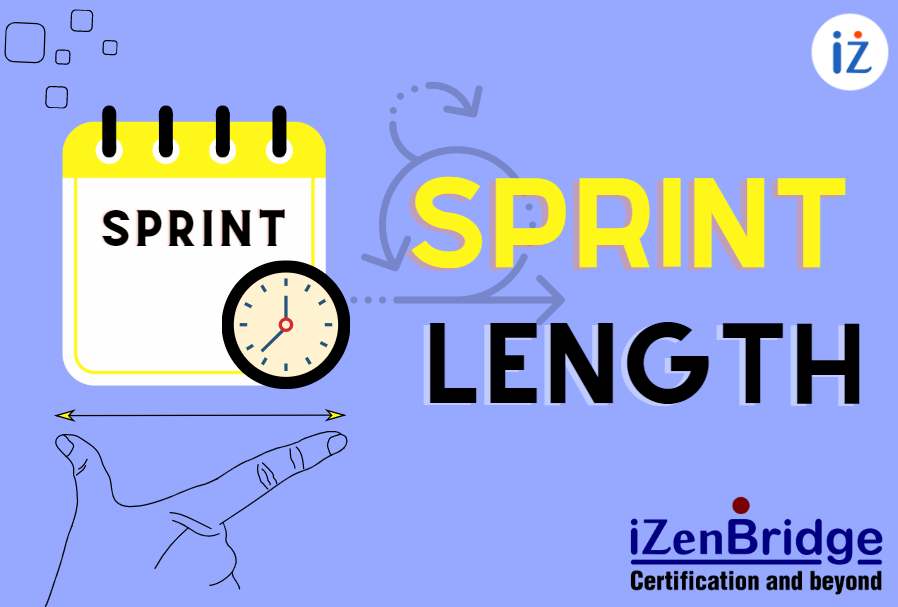

Defining a sprint cycle is an essential step in agile ways of working since agile project progress through a series of timeboxed iterations, also called Spring. It determines the duration of time in which the team can plan, execute, review, and learn from a cycle of work. However, defining a sprint cycle is not a one-size-fits-all approach, as it depends on various factors such as the project, environment, stakeholders, and organization. This article will explore the factors to consider when defining a sprint cycle for a new project.
Consider the Organization’s Processes and Guidance
One way of starting to identify the sprint cycle is by looking at the organization’s processes and guidance. For instance, if the organization follows the Scaled Agile Framework, then the team should also adopt similar sprint cycles as other agile teams. Additionally, the organization may have guidelines for periodic reviews at a particular frequency, which can influence the sprint cycle. Organizations are likely been doing Scrum-based execution for some time, and they have learned based on their environment what works best for them, so it is a good idea to check past learning and recommendations.
How long team can go without taking feedback?
A given time box in a sprint cycle is a rhythm that helps the team complete the learning cycle. The learning feedback cycle consists of planning, executing, reviewing, reflecting, and taking feedback on the product and the process. Scrum recommends having a maximum of 30 sprints, but teams can choose between one to four weeks. The ideal sprint duration depends on how long the team can go without taking feedback. If you are working in a stable environment, you can have a long feedback cycle, but if the uncertainties are high, we take frequent feedback and have a shorter sprint duration.
How long can the priorities remain unchanged?
In general, Scrum recommends keeping major changes outside the Sprint, which means we want to keep the sprint goal the same. If the priorities remain unchanged for a long, we can have a longer sprint duration; else we need shorter ones.
Consider the Overheads and Benefits Associated with Sprinting
As the team starts a sprint, they may have overheads for planning, reviews and retrospectives. Therefore, the team needs to balance the risk and overheads associated with sprinting to identify the right sprint cycle.
Create a Sense of Urgency and Meaniful Output.
The team needs to identify the right sprint cycle that creates a sufficient sense of urgency while producing something meaningful that the stakeholders can review. If the sprint duration is too long, people may feel relaxed and postpone completing the work. Therefore, it is essential to create a sense of urgency that encourages the team to prioritize their work. At the same time, the team should be able to produce a done increment with user-oriented functionality that helps review the work done.
Consider the Engagement of Stakeholders
Stakeholders’ engagement is vital in the sprint cycle, as they must review and provide product feedback. Therefore, the team must identify how frequently the stakeholders can collaborate and provide feedback. If the stakeholders are not available very often, the team should adjust the sprint cycle to match their feedback and engagement levels.
Industry Practice for Sprint Duration
Research and surveys have shown that a majority of teams in the industry use a 2-week sprint duration as their starting point. This duration is effective in most cases. After the 2-week sprint duration, the second most popular choice is a 3-week sprint duration. One-week and four-week sprint durations are rarely used in practice.
Start with 2- Weeks
When deciding on the sprint duration, the team needs to consider whether to use a 2-week or a 3-week sprint duration. Starting with a 2-week sprint is recommended, as it has proven to be effective for most teams. However, if the team encounters challenges due to the sprint duration, they can always adjust it later based on what they have learned.
Conclusion
Defining a sprint cycle for a new project requires considering various factors such as the project, environment, stakeholders, and organization. The ideal sprint duration depends on how long the team can go without taking feedback, the overheads and benefits associated with sprinting, creating a sense of urgency, and the engagement of stakeholders. It is essential to balance all these factors to identify the best sprint cycle for the team and the project. To know more about Scrum, consider joining our Certified Scrum Master (CSM) or Advanced Certified Scrum Master (A-CSM) training programs.